The aging in place maket in the US today is constantly being influenced by the increasing size of the aging population, the market desire to remain in one's home, a constantly increasing cultural diversity, and our aging housing stock associated with it's reduced affordability. Our aging population is really made up of two prominant age groups formed by the age 65 and over population and the baby boomers who were born between 1946 and 1965. Together these two groups own over 48% of all the US home inventory today. Aging in place design and the desire to remain in one's home is driven by social attachments via a network of neighbors, friends, and family bring about a new wave of elder construction solutions. Our cultural diversity assures that the same aging in place tactics for elder living solutions cannot work across the board for all individuals just as an individual's ability to live independently varies from person to person. With constantly aging housing, costs can be a major barrier in home modification for many residents. A catch 22 situation can arise when you consider the reduced affordability of another home versus the one that is presently occupied. In this case the homeowner must use the equity that has accrued in their home's value in order to make the modifications required. You will find out in the long run that it's cheaper to remodel your existing home using your accrued assets than it is to buy a new home in today's market and move.


Aging in place home remodeling in Austin will be completely driven by the homeowner's desire to remain in their home for as long as it is physically possible. When disability strikes, that same home you have endeared for at least part of your lifetime can become a prison that presents barriers, frustrations, and perils at every turn. The lack of any preparation or access upgrades possibly is driven by our youth oriented culture that wants to believe we are all young, bullet proof, and fit and will continue to be so. Perhaps we believe as a society that accessible bathroom upgrades will decrease our home's property values. The contrary is the reality. Just try looking for a barrier free accessible home. Actually, don't even bother. There are none. Oh yes, there are retirement communities for the older "active" seniors but the key word here is active having nothing to do with accessibility. Elder living solutions utilizing universal design provides access to everyone and all generations.

Aging in place services and CAPS certified remodeling in Austin are no different from those in any other city or state within the US. They are surely needed in virtually every home that I've visited in over 30 years of operating my remodeling business. Sadly, our archaic methods of architecture have no room for accessibility within the existing aging home inventory. Aging in place remodeling in Austin, Texas must be done by a certified aging in place specialist to benefit from and capture the most accessibility from the remodeler's education and experience. A successfully trained aging in place remodeler will have several capabilities like the vision and purpose to manage your project, he will have an expertise in construction, he will be skilled in effective communication, he uses time management alongwith his organized skills, and furthermore he will be capable of maintaining a balance and perspective for problem solving throughout your project.
There are really three categories of aging in place customers. Those who are simply and wisely planning ahead for their futures to remain in their present homes. The second category concerns those people who know they have a chronic medical disorder and need to prepare in advance for accessibility issues which will come as a result of their disease. People with diseases that are constantly causing increased physical or mental changes to their being are a good representative of this second group. The third group involves those people who either have had a chronic problem that has progressed severly altering their mobility or those who have sustained a life altering tragedy such as being involved in an accident. All of these groups will drive the future metamorphosis of existing inaccessible dwellings.
Disability is a complex phenomenon representing an interaction between one's physical impairments, the activities they need to perform, and the architectural barriers within the space in which this situation occurs. The terminology and jargon used for disabilities evolves regularly whereas, "handicapped" is no longer acceptable. It is no longer merely a description of intellectual or physical impairments. Each individual with similar impairments describes his or her limitations differently. The blind don't experience their world the same as a person with deafness and so on.
The National Association of Home Builders, in partnership with the AARP and Home Innovation Research Labs, created the CAPS program, which includes training and education on the technical, business management and customer service skills essential to compete in the fastest growing segment of the residential remodeling industry--home modifications for aging in place. David L. Traut CAPS owner of T-Square Company in Austin, Texas is one of the select group of professionals nationwide to earn the Certified Aging-In-Place Specialist (CAPS) designation, identifying him as a home remodeler and builder with the skills and knowledge necessary to remodel or modify a home to meet the unique needs of the older population, disabled owners or their visitors.
For additional information about the CAPS program, visit nahb.org/CAPS. For more information about T-Square Company, visit www.tsquareco.com or call 512-444-0097.

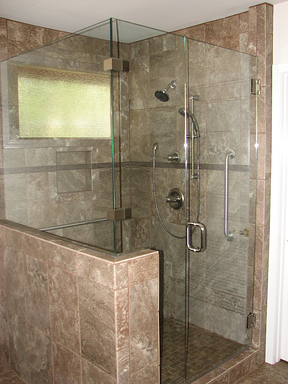
Tags:
Austin,
Texas,
barrier free access,
aging in place remodeling,
CAPS,
aging in place home modifications,
aging in place,
aging in place home improvements in Austin,
wheelchair accessible remodeling,
wheelchair accessible baths and kitchens,
handicap home modifications,
custom walk in showerss,
aging in place remodels,
disability bathroom remodels,
accessibility home remodeling in Austin,
accessible home remodeling,
Universal Design,,
Austin bath remodeling,
Austin bath remodel,,
Austin bathroom remodeling,
Austin bathroom remodel,
Austin kitchen remodeling,
Austin kitchen remodel,
aging in place services,
aging in place design,,
elder construction,
certified aging in place specialist
Let's face it, accessible homes are needed by all of us at some time in our lives. This is true whether it's for ourselves, a family member, or a guest. The need is certainly not driven by age but is a result of life's experience. Any family living with disability among any of it's generations within it's group can always benefit from additional accessibility. This will in turn increase safety and independence for all involved as they go through life needing elder living solutions.


There are really three categories of aging in place customers. Those who are simply and wisely planning ahead for their futures to remain in their present homes. The second category concerns those people who know they have a chronic medical disorder and need to prepare in advance for accessibility issues which will come as a result of their disease. People with diseases that are constantly causing increased physical or mental changes to their being are a good representative of this second group. The third group involves those people who either have had a chronic problem that has progressed severely altering their mobility or those who have sustained a life altering tragedy such as being involved in an accident. All of these groups will drive the future metamorphosis of existing inaccessible dwellings.

Disability is a complex phenomenon representing an interaction between one's physical impairments, the activities they need to perform, and the architectural barriers within the space in which this situation occurs. The terminology and jargon used for disabilities evolves regularly whereas, "handicapped" is no longer acceptable. It is no longer merely a description of intellectual or physical impairments. Each individual with similar impairments describes his or her limitations differently. The blind don't experience their world the same as a person with deafness. Some of our societal statistics that weigh into aging in place situations include reports stating that 19% of the population between the ages of 16 and 64 and 42% of those of us 65 and over have a physical disability affecting the activities of their daily lives. For a progressive condition, aging in place home remodeling in Austin definitely comes into play. This is the only way to insure both the safety and mobility for the homeowner or family member requiring the home modifications. The two main groups driving this aging in place market are those people who are 65 and over and the baby boomers. The first group is projected to reach 55 million in 2020. The baby boomer generation born between 1946 and 1965 today make up 28% of the U.S. population and are made up of some 77 million people. Modifications of existing homes using aging in place services is important because people of age 50 and older want to remain in their current home for as long as possible. Aging in place design in Austin should only be done by a CAPS certified remodeling company providing aging in place services. This is the only way that you can be assured that the home modifications are the right choices to satisfy your needs. There is no need to waste money only to find out that the wrong alterations were done by an inexperienced and non-qualified remodeling company. Always check their credentials to verify that the remodeler holds a CAPS certification. All registered CAPS program graduates and their remodeling company will be listed in a national registry in Washington. The information can be found by simply visiting nahb.org/CAPS.

We provide a means for our customers to remain in their homes for as long as possible through certified aging in place design. Gaining accessibility is the key component. Let us help you design and build a new accessible awareness for your existing home. Aging in place home modifications in Austin can show you how an accessible route will give you access to any part of your home no matter what your mobility situation is or will become. For obvious reasons, the bathroom and kitchen are the rooms most affected by a lack of accessibility when aging in place is a concern.
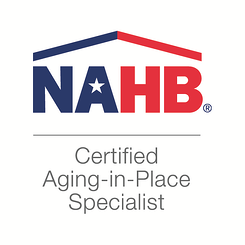
We are able to handle any remodeling project, and focus on collaborative client centered solutions. We are not afraid to think outside of the box for solutions that meet our client's needs. We are a company with extensive experience in physical and occupational therapy as well as construction, remodeling, and design. Services we offer include: individualized assessments, architectural design, interior design, accessible remodeling & construction, wheelchair lifts & ramps, stair lifts, residential/commercial elevators, ceiling transfer lifts, and other simple solutions such as grab bar & railing installations.
Please call T-Square Company for all your CAPS building and remodeling needs!
Tags:
Austin,
Texas,
aging in place remodeling,
CAPS,
aging in place home modifications,
wheelchair accessible baths and kitchens,
CAPS certification,
home remodeling,
CAPS certified remodeling in Austin,
aging in place remodels,
disability bathroom remodels,
aging in place designs,
custom tub to shower conversions,
accessible home remodeling,
Austin bath remodeling,
Austin bath remodel,,
Austin bathroom remodel,
Austin kitchen remodeling,
Austin kitchen remodel,
aging in place services,
aging in place design,,
elder construction,
certified aging in place specialist
If you have been considering a fine bathroom makeover or remodeling project in Austin there are a few things you should take into consideration. Bathroom makeovers in Austin, Texas can take on many looks and facets. The scope of work you choose to accomplish your bathroom transformation should effectively solve your problems and most importantly, your needs as the home owner. The identification of these specific needs belongs to you the home owner. The way your home is structurally altered to accomplish these needs is the job of the professional remodeling contractor. Accessibility should be a concern no matter what your age. If your concerns are not for you, barring any life changing accident, they could concern the accessibility of another generation's independence is using the restroom. CAPS professionals in the remodeling industry can help with solutions in solving these issues. Bathroom remodeling contractors Austin, Texas can provide you with answers to your much thought about questions.


Just look at the different types of housing represented throughout Austin and the surrounding areas. Smaller homes, cottages, sprawling historical town homes surrounded by architecturally pleasing fences, rustic ranch homes, Macmansions, and sleek high rise condominiums are just a few examples of the structures that define Austin's diverse housing landscape. Economic situations along with personal preference formulates where we choose to live in a town with such diversity. Most people remember how the old style bathtub/shower combination was a standard part of any bathroom design. Some residential showering areas were enclosed using the multicolored vinyl shower curtain option while others had bipassing or sliding shower doors on tracks. The doors were framed with either chrome or gold colored aluminum matching the sliding tracks. Modern bathroom designs have become much more sophisticated because the many available bathroom products are easier to be discovered by the homeowner. There are millions of pictures representing fine bathroom upgrades or bathroom remodeling all across the internet.
Certainly there are many upgrades available when planning a bathroom remodel. A custom tub shower conversion can create a bold look but will run you around $11,000. There are no spending limits for bathroom remodels. You can plan on spending around $12,000 to $15,000 for a hall bath remodel. The price tag can approach or exceed $35,000 for a complete master suite remodel. The type of fixtures and building components chosen along with the labor will compose the overall cost of the remodeling project.

Keep in mind that moving plumbing, especially drains, is one of the more expensive aspects of a fine bathroom makeover involving floor demolition. If you can limit and control the costs involved with this issue you will have more money to spend on the things that show off your endeavors. Changing water supply line locations for a custom tub shower conversion is not as difficult as moving drains especially when they go into the main drainage system that resides underneath the finished floor.
Proper lighting is always an important aspect to be installed during a bathroom remodel. It can be broken down by task. Recessed cylindrical can lighting is used today to provide the overall luminescence for the room. Trims with lenses can be installed above baths and showers by code to brighten darker areas. Light strips or single wall fixtures can be designed around the new framed beveled mirror that you have chosen. The choice of bulbs utilized is yours for now at least. Try using dimmers to control your new lighting creating mood.
Ventilation is so important when planning a bathroom upgrade because of the humidity involved. Too many times a single exhaust fan is installed above the toilet, or what is much worse, in the center of the room. Heat and humidity naturally rise and will overtake the entire room if given a chance. Today's quiet bathroom exhaust fans should be sized according to the room's air volume. They should be located above any bathing or showering facility and above the toilet. Conditioned air along with adequately sized duct work supplied by your central unit will further accentuate a pleasant feeling within the bath.
Bathroom plumbing fixture choices are numerous to say the least. Select reputable companies offering the best warranties especially when considering finishes used on control valve trims and the fixtures installed in the project. Larger walk in shower designs should have seamless fiberglass liners to avoid leaks if the house ever shifts. Using natural stone or glass tiles while additionally designing in glass blocks will certainly be an upgrade. As for the new walk in shower design, you can design the space to not need a door for splash protection or you can take the route of a clean looking frameless glass shower enclosure. This will surely set you back at least $900. The end result will be a sophisticated clean look of beauty enclosing your new shower. Whether the door sits upon a curb or you have a specific need for a curbless situation you will be satisfied with your choice.
Who do you choose to help you with your dream? It is true that a professional remodeling contractor with years of experience will cost you more than a handyman illegally playing among the trades at your peril but then again there are those professional guarantees to consider. The professional verses the handyman is more likely to seek your overall satisfaction that will follow him into his next job. A true building professional can also orchestrate the job's smooth flow limiting the down time of a most useful room. Subcontractors will not be covered up and each skilled trade is brought onto the sight as needed in an orderly fashion. Professionals normally have insurance to cover on the job accidents to protect the homeowners from having legal action brought against them personally. Be sure you ask for a certificate of insurance from your chosen professional contractor so that you aren't held personally liable for medical experiences covering a worker's accident while on your property. Don't forget that only a certified aging in place (CAPS) professional can help you solve your accessibility issues.
An Austin Bathroom Makeover
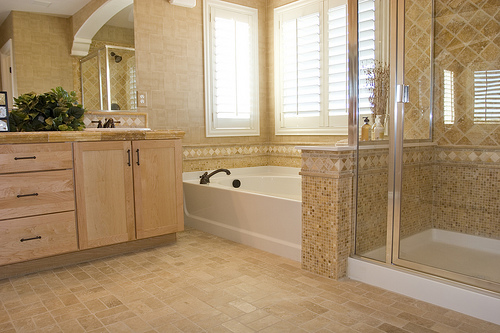

Tags:
Austin,
Texas,
aging in place remodeling,
CAPS,
aging in place home modifications,
bathroom remodeling,
wheelchair accessible baths and kitchens,
fine bathroom upgrades,
bathroom remodels,
bathroom makeovers,
CAPS certification,
ADA remodeling,
ADA bathroom cabinets,
disability bathroom remodels,
Universal Design,,
Austin bath remodeling,
Austin bath remodel,,
Austin bathroom remodeling,
Austin bathroom remodel,
bathroom modifications for elderly,
aging in place specialist,
aging in place services,
aging in place design,,
elder construction,
certified aging in place specialist,
independent living in Austin Texas
Aging in place construction and accessible home remodeling has become synonymous with handicap accessible home design and modification during our lifetime. If you have been paying attention to the medical news concerning our society you are well aware we are living longer than just a few decades ago. As a result, our senior populations are expanding and most people will experience health issues that are most common among the elderly. Most seniors will reach a point in their lives when they require specialized home environments to safely retain their independence. Home modifications can be used to accommodate anyone from people with mobility impairments to those with vision loss, hearing loss, or even cognitive or developmental disabilities. Accessibility home modifications or wheelchair accessible bathroom remodeling in Austin will allow anyone with limited mobility within your home to feel more empowered and independent. The extent of a customized accessibility design is dependent upon the activity level of the person needing the modifications.


Interior modifications can include adding grab bars or handrails throughout the home, lowering upper cabinets and counter tops to universal design heights, adding non-slip flooring, widening hallways or installing stair lifts, and widening doors to a clear 32" width. You might also consider lowering light switches and thermostats and installing easier to use door knobs. You should try to provide a clear barrier free path or accessible route to the most visited areas of your home like a disability access bath.
Modifying your bathroom following practiced wheelchair accessibility guidelines is a great place to start any universal remodel. This will provide access to both wheelchairs and walkers. Furthermore, you can help avoid many future injuries. Any wet area like the bath is the most dangerous of all your home's surrounding living space and is the most common area for falls and slips. Simply getting in or out of the tub or shower, using the toilet and sink, or just maneuvering over wet surfaces can be hazardous to your health. Installing properly positioned grab bars to increase safety is a great place to spend your money on a limited budget around the shower, toilet, and tub.

A walk in bath tub containing a water tight door can provide an easy alternative for people with mobility issues who cannot navigate over bathtub walls. Another alternative to consider is a walk in shower design which has the option of having a door. The shower door is not needed if the shower is designed properly protecting the adjacent bath floor areas from becoming drenched and hazardous. Any door is just another barrier to negotiate along a designated route for a person with mobility issues. If a wheelchair is needed for mobility, a roll in or transfer shower should be of consideration. A roll in shower is perfect for the person who wants to have a shower but doesn't have the strength to stand in the shower. On the other hand, a transfer shower enables a wheelchair user to move from the wheelchair or walker onto a sturdily mounted seat contained within the shower area. Again this will be determined by the shower user's mobility limitations. A curbless or non-threshold shower entrance is a superior design for gaining access to the walk in shower but it must be correctly designed for drainage. A curbless shower does not mean a shower door cannot be incorporated into the design.
A wall mounted sink can add accessibility to a bathroom by adding additional free space underneath the sink. This allows access with either a wheelchair or bench. Installing a single handle or hands free faucet can ease the burden of those with dexterity issues. Since a wheelchair bound person might bring their legs or the lower part of their body in contact with the plumbing below the sink, it is very important to insulate all the plumbing pipes to protect the user from scalds while the sink is in use.

Standing and seating is taken for granted by most everyone but for those with strength, balance, and mobility issues it can be a difficult task. This is why the toilet has to be a great consideration when designing an accessible, secure, and safe environment. Not only will it help prevent injury but the optimal accessibility design will help preserve an individual's dignity by extending their ability to function independently. Toilets should be of the correct comfort height and be equipped with the proper seat that allows for easy sitting and standing. Toilet seat lights can very helpful while they provide light at night or in darker rooms to help with depth perception and also light the toilet area to prevent trips and falls.
If you hire an experienced building remodeling contractor with infinite knowledge of accessibility home modifications they will be able to help you make the right ADA remodeling choices. These will include the improvements offering the most service to the individual with mobility issues. Talk to your contractor about the disability and the activity level of the person needing the modifications. Together you can arrive at a custom solution for your accessible home design.
A Wheelchair Accessible Bathroom
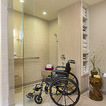
Aging in place home modifications are available through T-Square Company in the Austin area. We have an A plus rating with the local BBB and have over 30 years of remodeling experience. We are additionally a certified aging in place specialist offering complete aging in place services. Each design/build situation will be customized to fit your personal needs increasing your accessibility. Call 512-444-0097 today to begin the accessible second chapter of your life while remaining safe and secure in your existing home. CAPS #1636580

Tags:
ADA accessible,
accessible routes,
wheelchair accessible remodeling,
handicap home modifications,
bathroom remodels,
ADA remodeling,
ADA bathroom cabinets,
ADA compliance,
disability bathroom remodels,
handicap accessible bathrooms,
aging in place designs,
wheelchair accessible baths,
accessibility home remodeling in Austin,
accessible home remodeling,
bathroom modifications for elderly,
aging in place services,
aging in place design,,
certified aging in place specialist,
bathroom remodeling contractor Austin Texas,
handicap home modifications for disabled,
handicap accessibility,
handicap remodeling contractors,
bathroom modifications for disabled,
disability home modifications
With increasing age, simply maneuvering around within our home becomes more difficult. Some debilitating diseases slowly take over our bodies completely reducing mobility and independence over time. The situation is complicated further once we are forced to use any device for increased mobility. That's when we find ourselves asking how we are to negotiate a set of stairs or a doorway that is too narrow to allow entry into a room or even the entire house. These types of overpowering circumstances can certainly make life terribly difficult to deal with at times. Who would ever have imagined that just passing through a doorway we had negotiated many times could now present such a problem within our private life? This situation reminds us of the need for more handicap bathrooms.

Designated accessible routes can be created by first hiring a knowledgeable residential construction contractor in Austin, Texas. The experienced and CAPS certified handicap remodeling contractors in Austin that you contract must be skilled in both home remodeling and all ADA guidelines to perform CAPS certified remodeling. The noted accessible route will first provide ways to accomplish any elevation changes in your yard that once required only stairs leading up to your front door. A correctly angled ramp following ADA guidelines will help you gain access into your home. Perhaps the front door itself needs to be widened or additionally equipped with an electronic opener.
Once inside, the accessible route will continue derived from wheelchair remodeling into all the rooms thus increasing accessibility. Kitchen upgrades and handicap accessible bathrooms will provide roll under capability for wheelchairs at all sinks. A required underneath clearance and scalding protection below the sinks must be observed for the end user with special needs. The correct handles must be used controlling all sink faucets assisting those with limited mobility. Reach limits must not be exceeded above the new 34 inch high cabinet top.
During bathroom accessibility remodels, roll in or transfer showers equipped with adequately placed grab bars will lessen injury from falls while entering the bathing facility. Further outfitting these areas with hand held shower wands that can be temporarily mounted on adjustable slide bars will also be of assistance. Hallways need to be wide enough for wheelchair clearance and all entry doors at each room must be at least 36 inches wide for unobstructed wheelchair entry. A clear and unobstructed five foot wheelchair turning radius will be built into the design for increased accessibility to facilitate leaving a small room as in the bathroom. Lowering the light switches in certain rooms may be a requirement to help with decreased mobility to below 48 inches.

There are basically two styles of ADA vanities that comply with an unobstructed roll under area below the sink. This capability has everything to do with both the water supply lines and the main waste line connecting the sink. There must be provisions made to protect the user from being scalded when coming into contact with any one of the plumbing pipes serving the sink. These connecting pipes may become heated merely by the water passing through them creating the problem. The open type model should always receive both waste and supply insulating jackets applied directly to the pipes providing protection for the wheelchair user. The closed model concealing the pipes will be equipped with a removable face or face board covering the pipes. This pipe concealing panel must be installed at the correct angle. This allows for the needed unobstructed legroom required for the user. The vanity can extend beyond the sink but the area containing the sink is required to have this roll under capability. This section of the vanity must not be any taller than 34 inches above the finished floor with sufficient lower clearance. Clear unobstructed reach distances around the counter top area must be observed. Any motion controlled sensors integrated into the various dispensing devices and/or plumbing fixtures throughout the restroom present a true hands free benefit to all the restroom users. If these aren't in the budget then at least wrist handles used for controlling the faucet can be incorporated into the design of the vanity. Furthermore, automatic flush valves should be used on all toilets and urinals that provide for hands free use.
There is nothing strange, different, or out of the ordinary to consider when shopping for ADA kitchen cabinetry. The specialty cabinetry can be composed of any materials that currently make up standard off the shelf or custom cabinetry. It's all about the agreed upon cabinet industry standards for heights and distances being incorporated into the cabinetry designs . This allows the consumer with special needs a more comfortable experience while performing the kitchen's daily duties. Architectural barriers have been removed allowing for the proper legroom clearance, reach distance, and cabinet height. Upper wall cabinets are installed four inches lower providing for a comfortable reach distance above the cabinet top, installed at 34 inches above the finished floor, for the perfect height that is totally useful. The ease of operation of the new cabinetry is more favorable and convenient and certainly user friendly.
And now for the layout of your new ADA compliant kitchen. First you should try to maintain the five foot turning radius within your kitchen if you require the use of a wheelchair or other assistive mobility device. You will need to have your plumbing attachments brought into compliance to enable your freedom and safety. The installation of grab bars where needed within the kitchen can be very helpful for insuring your safety for maneuverability. These should be installed at 34 inches above the finished floor to safeguard your use of them. Having roll under capability for the new kitchen sink can be very helpful while you are utilizing the wheelchair. Exact clearances should be complied with for width and clear unobstructed legroom underneath the sink. The proper safety equipment should be installed on the plumbing pipes that prevent scalding of your legs.
Whatever your situation please rely on the experiences of a local building professional. Check out their credentials and references over merely price checks against other bidders. Don't make the mistake of letting a cabinet making sub play the part of a general contractor because his knowledge will be limited to that of the cabinets and not much else. You get what you pay for with proper planning.
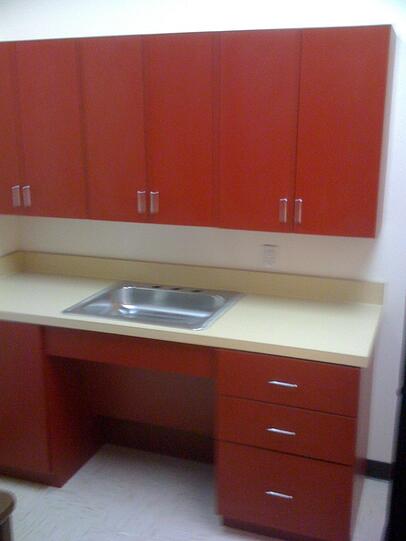

Tags:
Austin,
Texas,
ADA compliant kitchen cabinets,
ADA accessible,
accessible routes,
bathroom remodeling,
handicap home modifications,
bathroom remodels,
ADA remodeling,
building professional,
ADA bathroom cabinets,
ADA compliance,
ADA kitchen cabinets,
accessibility home remodeling in Austin,
Austin bath remodel,,
Austin bathroom remodeling,
Austin kitchen remodeling,
disability bathroom remodeling in Austin,
bathroom modifications for elderly,
aging in place services,
aging in place design,,
elder construction,
certified aging in place specialist,
bathroom remodeling contractor Austin Texas,
handicap accessibility,
bathroom modifications for disabled
A traditional home builder has never truly considered the special needs of the disabled or aging within any home design. Unfortunately the design emphasis is always put on aesthetics and takes for granted everyone's mobility. There certainly are no guarantees or clauses within any home's sales contract that will prevent our future personal life experiences from introducing us to at least a temporary disability. Accidents will always happen and you could find yourself having to utilize a wheelchair or walker to facilitate your independence for mobility. Limitations in our mobility or constantly changing needs experienced by both the disabled and the elderly have sprung a new dimension in construction known as ADA remodeling to accomplish increased kitchen and bathroom accessibility.
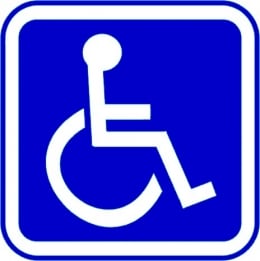

As we age, just maneuvering around within our home becomes more difficult. Some debilitating diseases slowly take over our bodies completely reducing mobility over time. The situation is complicated further once we are forced to use any device for increased mobility. That's when we find ourselves asking how we are to negotiate a set of stairs or a doorway that is too narrow to allow entry into a room or even the entire house. These types of overpowering circumstances can certainly make life terribly difficult to deal with at times. Who would ever have imagined that just passing through a doorway we had negotiated many times could now present such a problem in our life?
Designated accessible routes can be created by first hiring a knowledgeable residential construction contractor in Austin, Texas. The experienced builder you contract with must be skilled in both home remodeling and all ADA guidelines tom successfully accomplish disability bathroom remodeling in Austin. The noted accessible route will first provide ways to accomplish any elevation changes in your yard that once required only stairs leading up to your front door. A correctly angled ramp following ADA guidelines will help you gain access into the house. Maybe the front door itself needs to be widened or additionally equipped with an electronic opener.

Once inside, the accessible route will continue into all the rooms increasing their accessibility provided for by wheelchair remodeling. Kitchen upgrades and disability access bathrooms will provide roll under capability for wheelchairs at all sinks. A required underneath clearance and scalding protection below the sinks must be observed for the end user with special needs. The correct handles must be used controlling all sink faucets assisting those with limited mobility. Reach limits must not be exceeded above the new 34 inch high cabinet top. Roll in or transfer showers outfitted with hand held showers and adjustable slide bars can also be of assistance. Hallways need to be wide enough for wheelchair clearance and all entry doors at each room must be at least 36 inches wide for unobstructed entry. A clear and unobstructed wheelchair turning radius will be built into the design for increased accessibility to facilitate leaving a small rooms in the bathroom. Lowering the light switches in certain rooms may be a requirement to help with decreased mobility.
Your professional builder will be able to access the costs associated with the accessible route designed plus he must be able to lead you in the right direction for the available budget you have to spend for your ADA remodel. Your biggest and most important duty will be in qualifying the builder you choose. Remember that this special type of information is not common knowledge with all builders and remodelers. You must be sure he has both the experience and knowledge for understanding any and all of the ADA requirements that will most certainly increase your accessibility. If he uses the correct methodology, your lifestyle can become much more manageable and independent making adapting to life's changes far easier. Do your homework and don't depend on advise from others for guidance in solving your most personal problems in life.
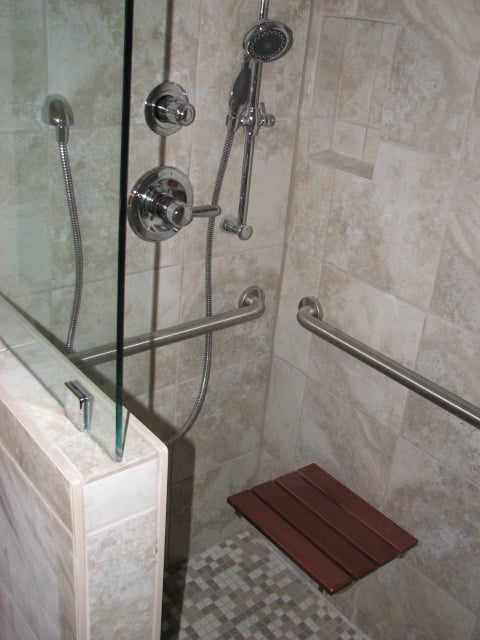

Tags:
Austin,
Texas,
residential construction contractor,
how-to,
ADA accessible,
accessible routes,
ADA bathroom cabinets accessible routes,
ADA remodeling,
ADA bathroom cabinets,
disability bathroom remodels,
handicap accessible bathrooms,
aging in place construction,
accessibility home remodeling in Austin,
accessible home remodeling,
Austin bath remodeling,
Austin bath remodel,,
Austin bathroom remodeling,
Austin bathroom remodel,
aging in place specialist,
aging in place services,
aging in place design,,
certified aging in place specialist,
bathroom remodeling contractor Austin Texas,
bathroom remodeling Austin Texas,
bathroom modifications for disabled,
ADA vanities
Many of us will face at least a temporary disability during our lifetime requiring some alterations to our living space. Those changes which will greatly aid in maneuvering through our daily routines. The temporary or permanent use of mobility devices signifies a lifestyle change in anyone's future often as a result of an accident. This situation can make getting around safely in our home much more difficult. The often used daily paths in our lives will be disrupted and complicated if you find yourself using a wheelchair or walker as a permanent means of mobility.


Keeping ourselves independent requires planning during handicap remodeling projects providing accessible routes throughout the home. Sometimes just entering the home can be a problem if you find yourself in a wheelchair pondering on how to negotiate the steps leading to your front door. Traditional home builders have never considered the issues affecting mobility for the disabled or elderly.

ADA remodeling and universal design ideas begin at the front door using ramps to get around the stair issue mentioned above. The front door may need to have locking hardware complying with special needs. Once inside the home, an accessible design and designated route will let you reach the kitchen or bath without restrictions. The adjusted clearances between walls within a hallway will be wide enough (42" or more) for a smooth passage. Widening the entrances to all rooms to 32" or greater means you can now maneuver throughout the home. By using the correct lever door hardware you will no longer impede mobility creating frustration while moving about. Having an unobstructed turning radius of five feet within each room is also very important for wheelchair maneuvering, especially in the bathroom.

What really defines the accessible homes of Austin? Barrier free architectural design and accessibility for all who enter the structure while approaching the main living areas of the home in question is a fair definition. Universal design and aging in place trends have taken hold in the residential remodeling industry. The current housing inventory doesn't offer the features needed for safety and accessibility in the numbers needed to accommodate the ever growing demand. It is ultimately up to the individual homeowners and their families to plan for future housing needs. Once it is discovered that modifications to an existing home are not possible to accomplish total accessibility then it is time to consider a newer or custom built accessible home. What are the main design issues regarding aging in place home modifications in Austin?
- Low maintenance with little need for landscaping or exterior upkeep which could translate into newer rather than older homes that are the accessible homes of Austin.
- An accessible level entry either achieved with ramps or the rare flat lot in Austin. Consumers are looking for the free maneuverability that more open floor plans offer having greater clear unobstructed floor space. Wider doorways and unobstructed accessible routes are truly a concern. These structures will provide flat floors without transitions requiring steps or stairs to move around.
- An accessible master suite and kitchen located on the same floor is preferable. If two story homes are mandated by the community then the guests will inhabit the second floor. If the master suite needs to be located on the second floor then closets can be stacked to house a future elevator installation.
- Evolving kitchens have sprung up due to the more open floor plans. Fewer wall cabinets, lowered cabinet tops, pullout shelves or specialized drawers, and a reduced number of mobility obstructing doors represent the evolution of today's cabinetry. Knee spaces can be incorporated into a kitchen design for roll under access to the sink, prep area, and cook top. Higher toe kicks can facilitate greater wheelchair access.
- Appliances are being installed at more comfortable heights due to decreased reach distances and bending motion. Raised dishwashers, refrigerator drawers, dish washing drawers, and non-stacked double ovens are just a few changes within the appliance world. Microwaves can be installed below the cabinet top and cook tops with controls located on the front represent another appliance metamorphosis helping with reach problems.
- The lack of cabinet doors creating a new accessible open look for cabinetry is taking hold on the market. This is becoming more popular in both the bath and kitchen of accessible homes.
- Bathroom vanities with universal height cabinet tops and open knee spaces are taking over the marketplace. These new residential vanities do not need to look institutional. They can be designed like any other piece of fine furniture. Comfort height toilets covered with any one of a multitude of available seats to fit every need prevent deep knee bends required for seating. Curbless roll in showers are advised for everyone on a universal level. The shower should contain at least a shower wand on a sliding bar to be available for varying heights of use along with a regular height shower head with diverter control if desired. Folding seats are useful if caretakers are involved and secure grab bars around the shower perimeter will increase the safety factor and prevent falls. All of the bathroom floor surface must be nonskid to prevent slipping on a guaranteed wet floor.

Finding a contractor familiar with the guidelines of accessibility can be quite difficult. Be sure to check out the credentials of any potential bidders you contact. Be sure they understand that the alterations you are seeking are for wheel chair accessible home remodeling and modifications. Furthermore be sure this person knows and practices both the federal and most importantly your state's requirements before entering into any contract.
Let's face it, accessible homes are needed by all of us at some time in our lives. This is true whether it's for ourselves, a family member, or a guest. The need is certainly not driven by age but is a result of life's experience. Any family living with disability among any of the generations within it's group can always benefit from additional accessibility. This will in turn increase safety and independence for all involved as they go through life.
Aging in place home modifications are available through T-Square Company. We are a certified aging in place specialist. Each design/build situation will be customized to fit your personal needs increasing your accessibility. Call 512-444-0097 today to begin the accessible second chapter of your life while remaining safe and secure in your existing home. CAPS #1636580
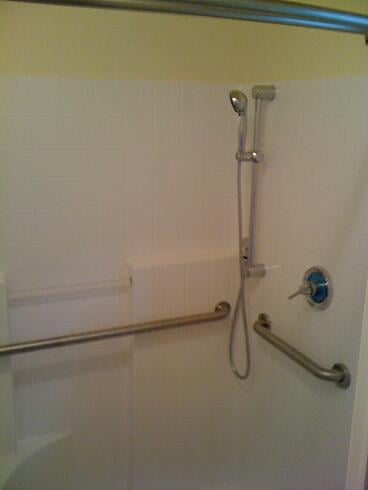

Tags:
Austin,
Texas,
how-to,
ADA compliant kitchen cabinets,
ADA accessible,
accessible routes,
aging in place home modifications,
ADA remodeling,
ADA bathroom cabinets,
accessibility home remodeling in Austin,
accessible home remodeling,
bathroom modifications for elderly,
aging in place specialist,
aging in place services,
aging in place design,,
elder construction,
certified aging in place specialist,
bathroom modifications for disabled,
ADA vanities,
bathroom accessibility remodels in Austin,
accessibility remodelers in Austin,
ADA remodeling Austin, Texas,
ADA bathroom Austin, Texas,
accessibility designs Austin Texas



























